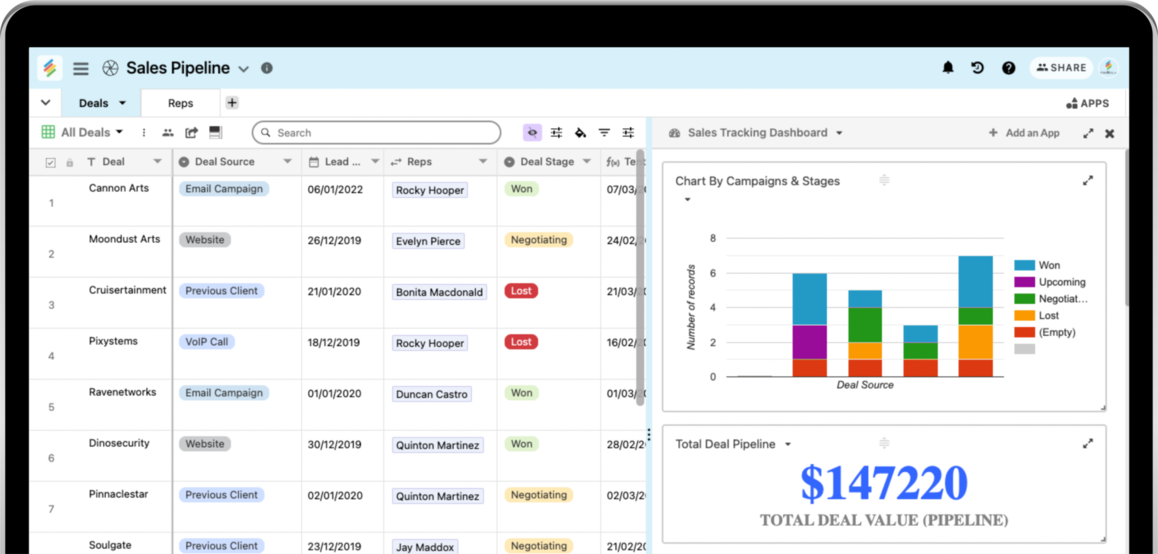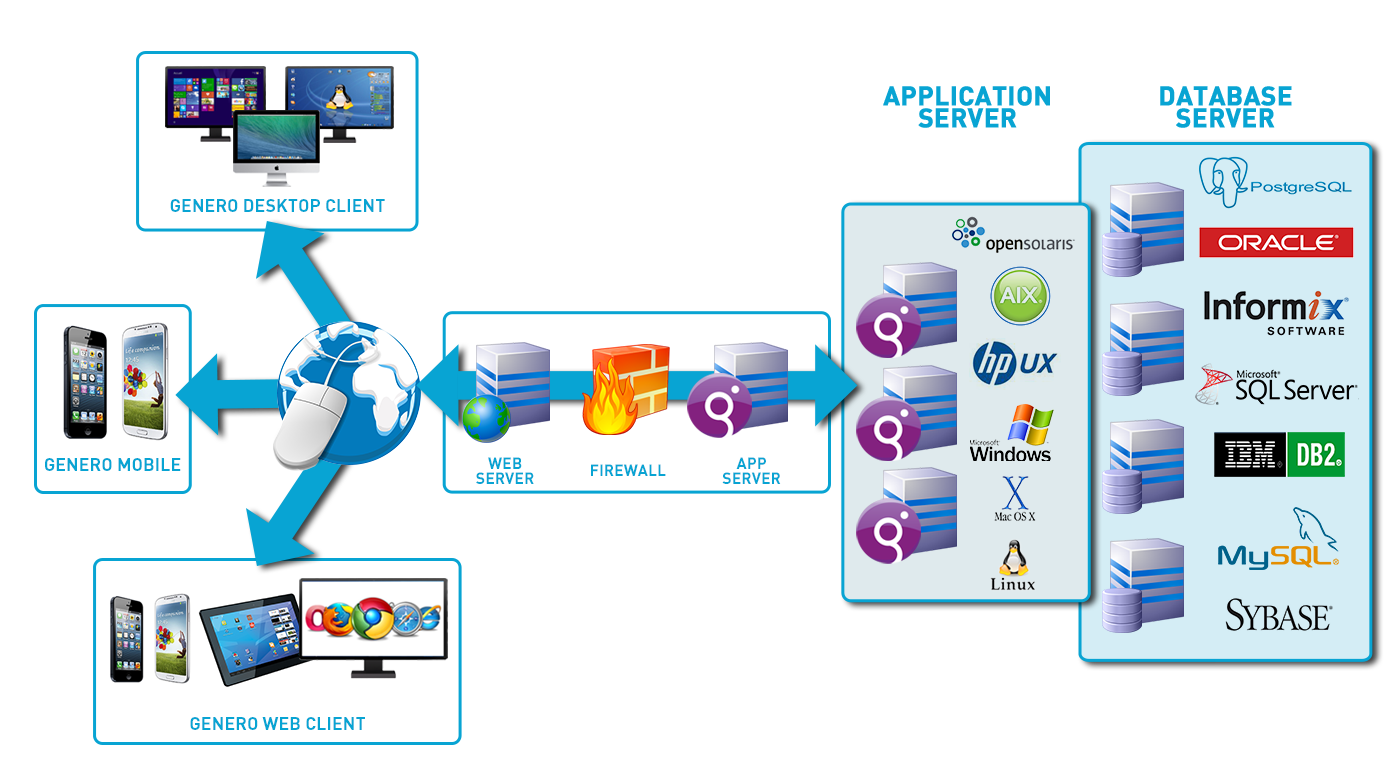Unlocking the Prospective of Scalable Data Sources: No Coding Required for Seamless Data Combination and Management
The emergence of no-code remedies is changing exactly how organizations approach scalable data sources, enabling seamless data assimilation and administration without the demand for extensive coding skills. This standard shift uses substantial benefits, such as raised access for non-technical users and improved functional performance. As businesses look for to harness the power of their information, the essential features and prominent tools that promote this change warrant closer exam. What implications do these developments hold for the future of data-driven decision-making?
Recognizing Scalable Databases
Just how do scalable databases accommodate the growing demands of modern applications? Scalable data sources are developed to deal with boosting quantities of information and customer demands without compromising efficiency.
In addition to scaling approaches, scalable data sources usually incorporate advanced architectural features, such as sharding and duplication. Sharding splits data into smaller sized, manageable pieces, enabling parallel handling and lowering feedback times. Replication ensures information accessibility and toughness by producing copies of data throughout numerous nodes, safeguarding against potential information loss.
Moreover, contemporary scalable databases leverage cloud computer innovations, enabling vibrant source allowance based on need. This versatility allows organizations to react quickly to varying work, making certain optimum efficiency and user experience. As organizations progressively count on data-driven decision-making, comprehending scalable databases comes to be vital for harnessing their capacity in supporting modern applications.
Advantages of No-Code Solutions
As companies progressively take on scalable data sources to manage their expanding data requirements, the need for easy to use advancement tools has likewise surged. No-code remedies are becoming an important element in this landscape, offering several vital benefits that boost functional effectiveness and ease of access.

Second of all, these options substantially accelerate the growth procedure. By eliminating the demand for coding, companies can rapidly prototype applications, iterate on layouts, and deploy solutions in a portion of the time needed by traditional approaches. This agility makes it possible for services to respond swiftly to market needs and transforming conditions.
Furthermore, no-code platforms frequently come furnished with pre-built templates and integration capacities, simplifying the link with existing systems. This lowers the intricacy typically related to information integration, ultimately decreasing the total cost of possession. Because of this, organizations can concentrate on leveraging information insights instead of obtaining bogged down in technological details, optimizing their critical capacity.
Secret Features for Information Assimilation
Efficient data assimilation is essential for companies seeking to harness the full possibility of their scalable data sources. Key features that facilitate smooth data integration consist of robust data adapters, automated data mapping, and real-time data synchronization.
Robust information connectors make it possible for companies to link different data resources, whether they reside on-premises or in go to website the cloud, ensuring thorough access to diverse datasets - no-code. Automated data mapping simplifies the procedure of lining up diverse information styles and frameworks, permitting quicker and more exact integration procedures. This feature lessens the need for hand-operated intervention, minimizing the possibility for mistakes
Real-time data synchronization is an additional essential feature that makes certain information consistency throughout systems. By check it out updating information in real-time, organizations can maintain a precise and current sight of their info landscape, which is essential for prompt decision-making. Additionally, aesthetic analytics and straightforward dashboards improve the presence of incorporated information, enabling stakeholders to acquire workable insights easily.
Finally, information administration capabilities make sure conformity with regulations and interior policies, securing delicate info while advertising a culture of data integrity. Collectively, these functions encourage organizations to accomplish reliable and reliable information integration.
Popular No-Code Tools Available
Organizations progressively count on no-code devices to enhance their information integration procedures and streamline operations. These platforms eliminate the need for comprehensive programs expertise, enabling users to create applications and take care of information with instinctive visual interfaces. Among the most prominent no-code tools are Airtable, Zoho Developer, and Bubble, each offering special attributes customized for different company needs.
Airtable combines the simplicity of spreadsheets with the performance of data sources, enabling customers to work together and organize on information efficiently. Zoho Maker offers an extensive collection of adjustable applications, allowing individuals to automate process and integrate with various other Zoho items effortlessly. Bubble attracts attention for its capacity to produce innovative internet applications without coding, providing to startups and ventures alike.
Additionally, tools like Zapier and Integromat promote automatic workflows by incorporating numerous applications, allowing customers to attach data resources effortlessly. These no-code solutions not just save time yet likewise encourage teams to concentrate on strategic campaigns as opposed to technological hurdles. As companies remain to embrace digital improvement, the fostering of no-code devices is readied to transform the means information assimilation and management are approached, driving efficiency and technology.
Real-World Usage Situations
Various markets have efficiently see post carried out no-code devices to address specific obstacles and enhance operational performance. In the healthcare industry, for example, carriers use no-code systems to improve person record monitoring and consultation scheduling. By integrating different information sources without comprehensive coding, medical care specialists can focus a lot more on individual care instead than administrative jobs.
In retail, businesses leverage no-code data sources to take care of supply and sales data in genuine time. no-code. This permits fast decision-making concerning stock levels and marketing approaches, ultimately improving client contentment and sales efficiency
Moreover, financial institutions have actually embraced no-code remedies to automate conformity coverage and information analysis, speeding up and minimizing hand-operated mistakes action times to regulative adjustments.

These real-world use cases illustrate the versatility and effectiveness of no-code devices in various sectors, confirming that scalable databases can drive innovation and functional efficiency without the requirement for considerable shows understanding.
Conclusion
To conclude, the assimilation of no-code solutions right into scalable database administration represents a considerable improvement in data taking care of capabilities. By assisting in seamless links between diverse data resources and automating workflows, these devices encourage companies to efficiently handle growing data quantities without the requirement for technological experience. The resultant improvement in functional performance and data-driven decision-making emphasizes the transformative possibility of these cutting-edge techniques within numerous sectors, ultimately supporting critical objectives and cultivating business development.
Replication makes sure data accessibility and longevity by creating duplicates of data across several nodes, guarding versus prospective data loss. - no-code
Durable data ports allow organizations to connect different data resources, whether they live on-premises or in the cloud, making sure detailed access to diverse datasets. Automated information mapping streamlines the procedure of lining up diverse data layouts and structures, enabling for quicker and more exact combination processes.Real-time information synchronization is one more essential function that guarantees information consistency throughout systems. By helping with seamless connections between varied data sources and automating process, these tools encourage organizations to successfully take care of growing information volumes without the demand for technical experience.